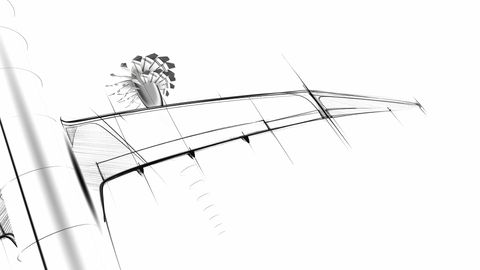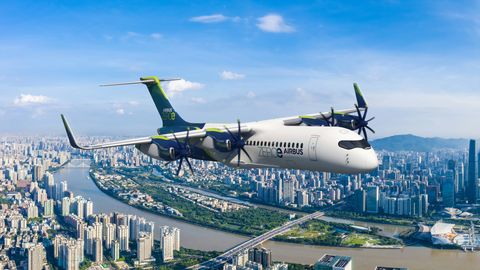IoT: Aerospace’s great new connector

In the aerospace industry, the Internet of Things (IoT) is revolutionising operations on the ground and in the air. Real-time analytics via IoT are already driving improvements in quality and productivity—while passengers can look forward to a variety of exciting new in-flight experiences.
In 1999, MIT technology pioneer Kevin Ashton harboured an all-consuming preoccupation: how to optimise supply chain operations via a network of smart devices using radio-frequency identification (RFID) tags. And his quest to do so ultimately paid off. Alongside his colleagues at the Auto-ID Centre at MIT, he created a global standard system for RFID and other sensors. But one key question remained unanswered: what to call this exciting new field? Eventually, he settled on the term “Internet of Things.”
In the two decades since, the concept of IoT—which now encompasses a global ecosystem of sensors, embedded computers and smart devices that communicate with each other and share data—has exploded. Today, approximately 14.2 billion connected devices are currently in use around the world. By 2021, that figure is expected to jump to more than 25 billion due to a combination of cloud computing power, decreasing hardware cost and faster 5G data transfer that will accelerate growth. These devices include smart home appliances and wearable trackers, as well as a large variety of industrial innovations to improve manufacturing and operational efficiency.
In the business world, IoT is already having a major impact, from changing the methods of business operations to transforming the way information is collected and exchanged. And every sector is impacted—including aerospace.
Industrial IoT to boost aerospace manufacturing efficiency
In the aerospace industry, manufacturing efficiency is enjoying a big boost thanks to industrial IoT. This is because advanced analytics offers insight in post-flight time, enabling manufacturers to rapidly take action to correct inefficiencies.
For example, IoT enabled smart meters can offer information on energy usage in aircraft production, which could lead to significant cost savings and sustainable operations. Because advanced analytics algorithms analyse the usage and propose energy-saving measures, energy consumption could be reduced by 20%.
IoT can also give instant insight into how an entire shop floor is operating. In Airbus’ Saint Eloi factory, data from machines and conveyors is fed into a live visual representation to create a “digital shadow” of the entire assembly line. This enables users to track operations in real time, as well as carry out highly accurate simulations to find the most effective ways of enhancing operations.
At the same time, quality rates and productivity can also be improved. For example, IoT can help to monitor and control the amount of torque provided by a tool on the assembly line. If too much or not enough torque is applied, the tool stops and the user is notified immediately. At Airbus, this approach has improved efficiency by 20-30%.
By harnessing big data through IoT technology in the cabin, the on-board experience will reach the next level. And that next level is a lot more personalised.
- Ingo Wuggetzer - Airbus Vice President Cabin Marketing

Future passenger experience – Paris Air Show 2019 – Day 2
Ingo Wuggetzer, Vice President Cabin Marketing at Airbus, highlights technologies and services that will redefine the passenger experience aloft while touring the A330neo on static display.
IoT in the cabin: a connected experience
IoT is also making its way into the cabin—enabling airlines and passengers to look forward to a variety of exciting new travel experiences. This includes a more personalised environment, which is enhanced with new applications that enable improved interactions with the passengers’ immediate surroundings, including customised entertainment and dining options.
To create this new cabin experience, Airbus has launched its Connected Experience solution. Developed with a variety of leading partners, this open ecosystem will provide real-time links between core cabin components like the galley, lavatory, meal trolleys, seats and overhead bins. Cabin crews will have access to digital services. Consolidated, real-time data during flight—which is analysed on Airbus’ Skywise platform—will enhance predictive maintenance, cabin operations and reliability. Connected seating will provide crew with instant access to valuable information—is the seatbelt fastened, the armrest down and backrest upright? And post-flight analysis will provide airlines with valuable insight into passenger behaviour so they can continue to improve the service in the future.
As IoT increasingly becomes the standard throughout the aircraft, innovation across many areas will be essential. For Airbus, dozens of projects are expected to contribute to a wider cabin concept that aims to improve cabin flexibility and services.



